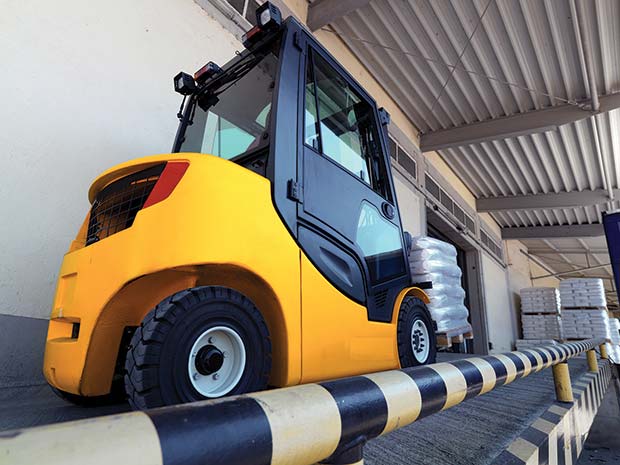When fork lift trucks, lorries and pedestrians interact, the chance of trouble is never far away. Accounting for 25 per cent of workplace transport accidents, loading bays are high risk. FLTA Chief Executive Peter Harvey MBE examines the risks and offers advice on how those responsible for safety can reduce risk.
 Any area where workplace transport and pedestrians meet brings with it the potential for danger. It’s little surprise that, in the loading bay, where the HSE’s three most dangerous forms of workplace transport work sideby- side with pedestrians, is the setting for 1 in 4 workplace transport accidents.
Any area where workplace transport and pedestrians meet brings with it the potential for danger. It’s little surprise that, in the loading bay, where the HSE’s three most dangerous forms of workplace transport work sideby- side with pedestrians, is the setting for 1 in 4 workplace transport accidents.
However, many of these often life-changing events could have been easily avoided through changes to the site’s layout or operating procedures.
Assess the risks yourself
As an employer, it is your duty – by law – to control workplace risks. Risk assessments enable you to identify who will be harmed and how, and allows you to consider the sensible and proportionate measures to negate them.
Monitoring your loading bay activities, allows you to develop a better understanding of how vehicular and pedestrian traffic interact.
Observation can be done in person, but this may not give you the space, time and attention necessary to reflect on what’s being seen and what it means.
Some companies have found recording and reviewing video footage has proved to be an effective tool in observing current practice and identifying issues.
Who is at risk?
Pedestrians account for 57% of all serious workplace injuries – a statistic to keep in mind as you go about your day-to-day business. If you’re reading this then there’s a good chance that at some point you’ll find yourself in a situation where pedestrians and forklifts are in close proximity.
It doesn’t matter if you’re a manager, supervisor, fork lift driver, warehouse operative or an office worker – it’s up to you to be fully-versed in procedures.
You might be working sideby- side every day, you might be walking through an area with forklifts once a year: it doesn’t matter, everyone has the same responsibility. As you go about your work, always ask yourself “Is there a way this could be improved?”
The importance of segregation
The number one way of improving safety is to segregate pedestrians from lift trucks. This can be done in several effective ways, including:
• Painting traffic routes on the loading area floor
• Using raised kerbs to separate the traffic routes
• Install elevated walkways
• Use crash-proof barriers
• Installing blue light warning systems
• Introducing proximity alarms on trucks
• Implementing one-way systems
• Establishing waiting areas for lorry drivers during loading/unloading
Managers could consider changes such as:
• Safety awareness courses for operators and staff
• Excluding pedestrians from loading areas
• Enforcing speed limits for trucks near pedestrians
• Prohibiting use of phones
• Using banksmen to direct and supervise vehicles
Regardless of what changes you make, it cannot be emphasised strongly enough that managers should restrict workers on foot from lift truck traffic routes and enforce these rules strictly and consistently. Every loading bay is different. However, a well-designed and maintained loading bay with suitable segregation of vehicles and people – that is policed by management – will make a significant difference to the safety of your operations.
Here to help
If you require assistance or advice on improving safety on your site, you should consider the FLTA’s Safe User Group, a special form of membership for fork lift truck users that includes continual support, a help hotline and a vast repository of essential safety resources.
FLTA
Tel: 01635 277577




Comments are closed.